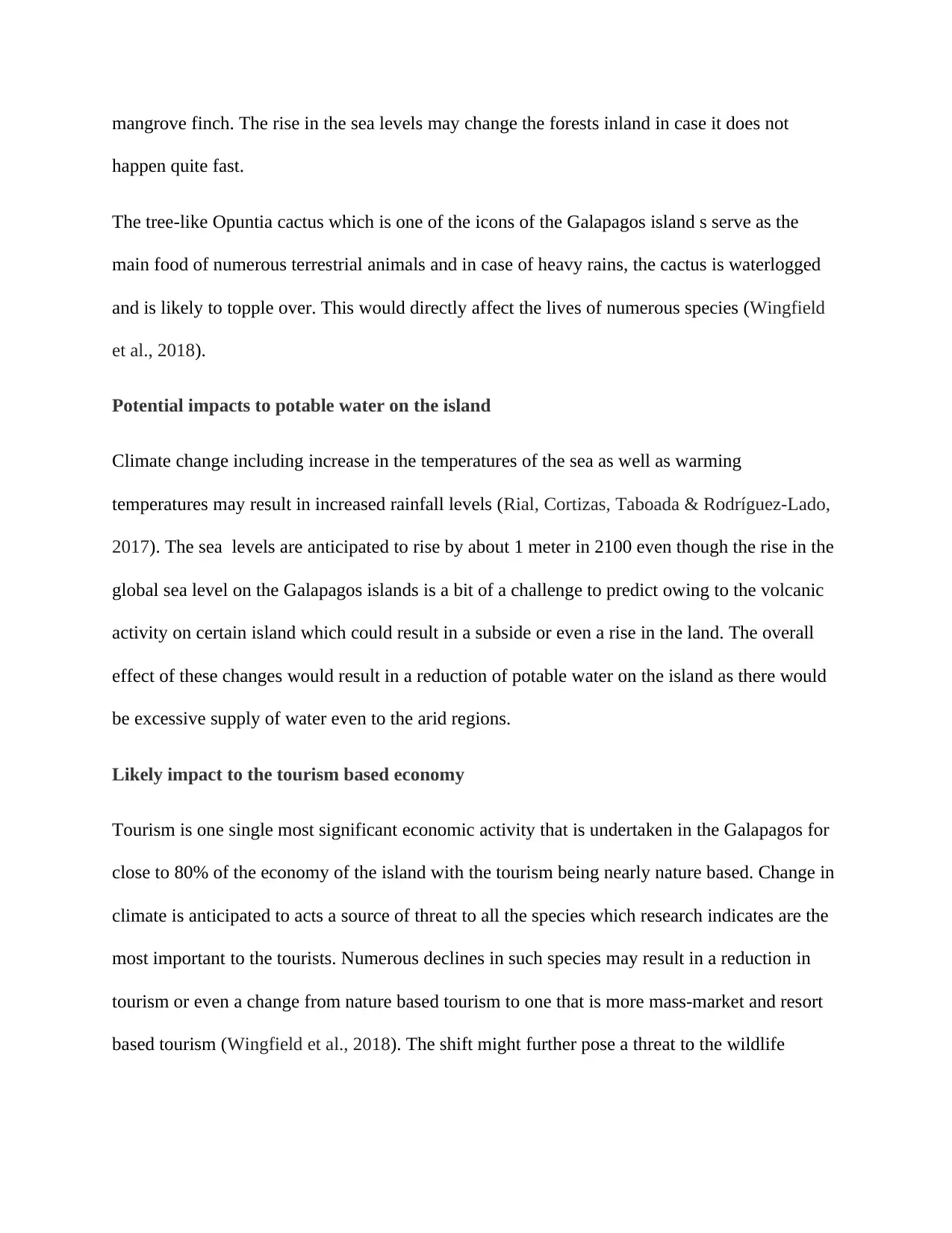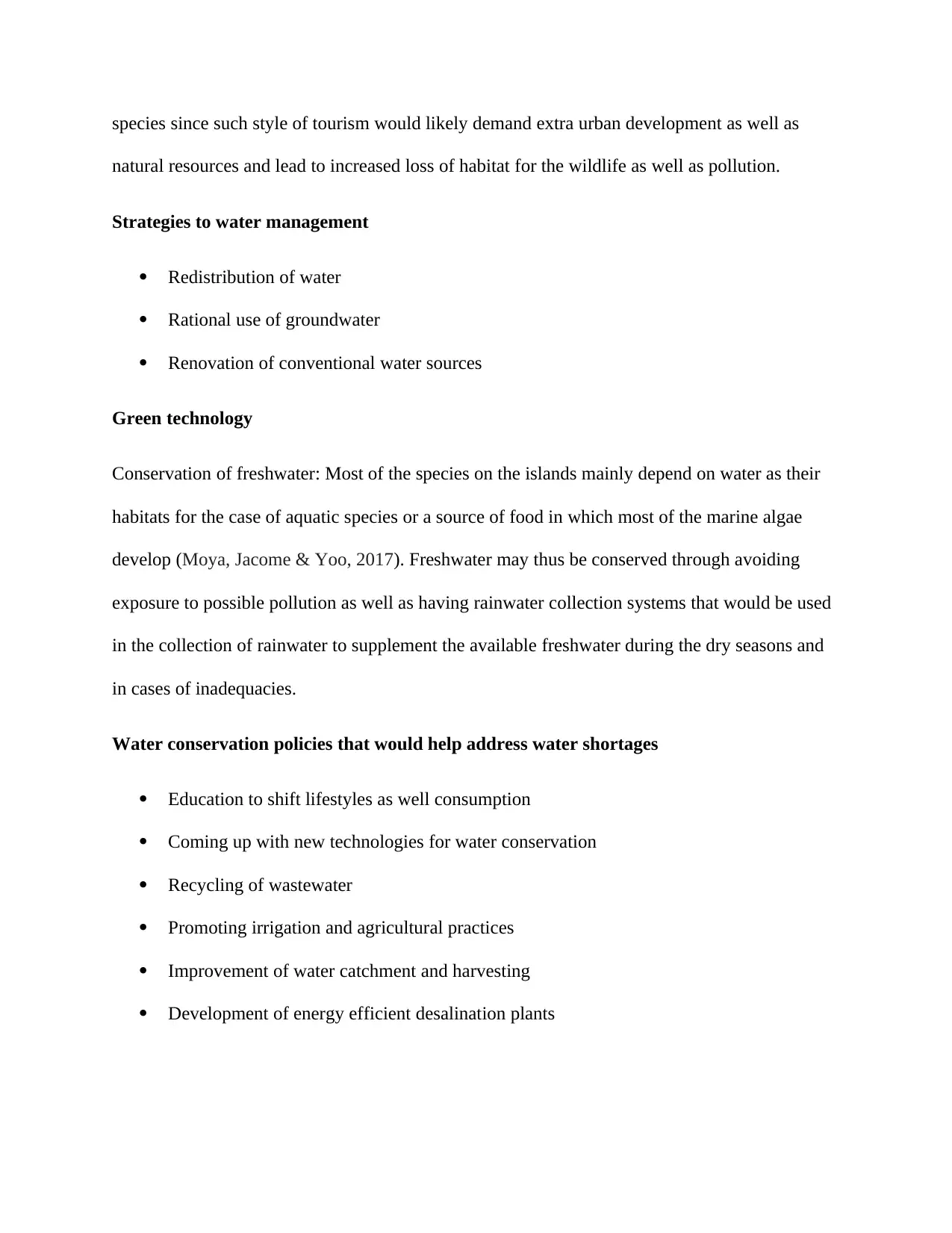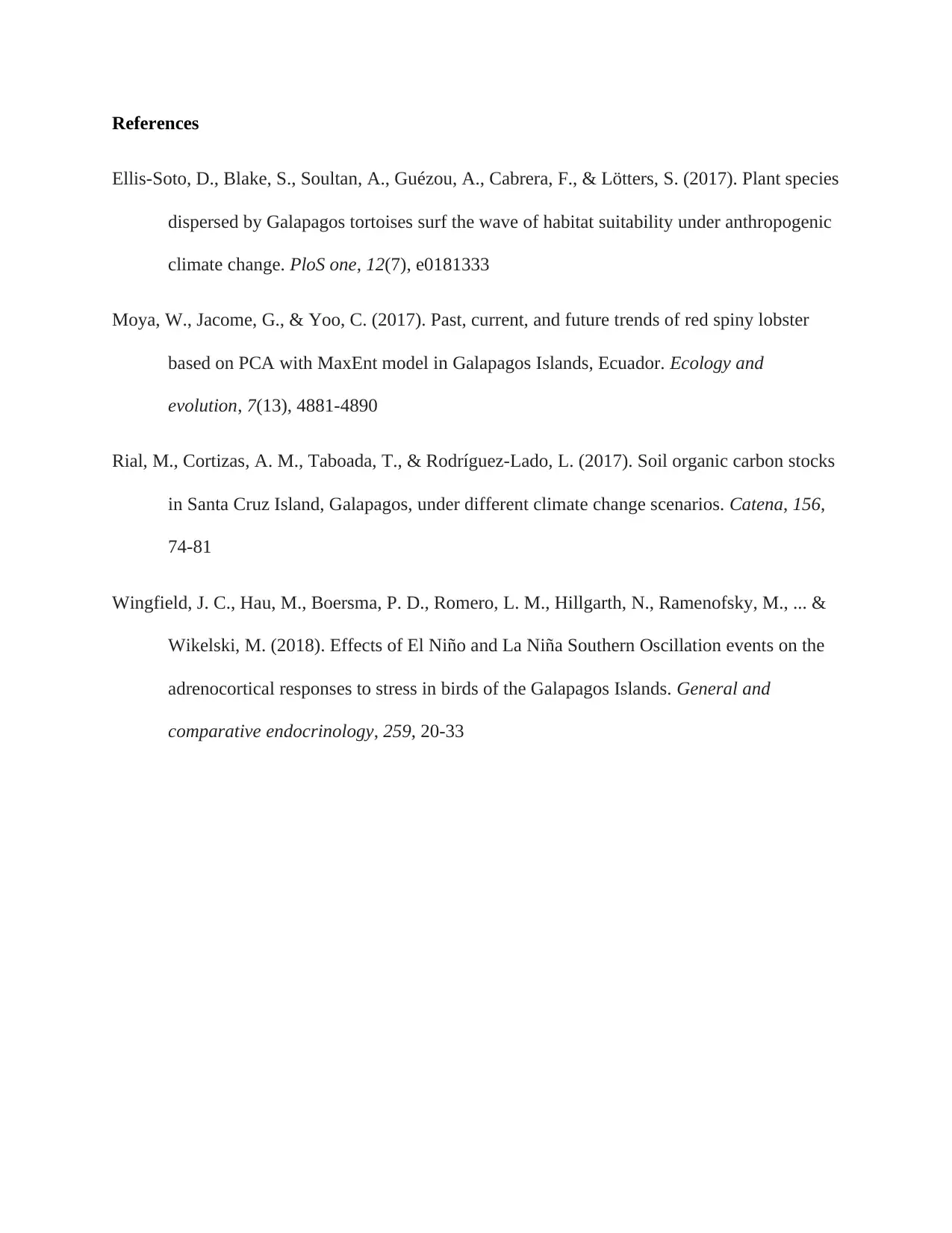Assignment Instructions
For this assignment, you work for a Sustainable Development Firm and have been hired to determine a plan to best prepare the Galapagos Islands for the effects of Climate Change. Using the resources provided and additional research, write a proposal that summarizes the problems the Galapagos Islands are currently experiencing and the potential impacts in the future should the effects of climate change continue. You can use research based on other island nations, should you have difficulty finding resources specific to the Galapagos Islands.
In your paper, be sure to:
Describe the potential impacts to the island ecosystems due to Climate Change.
Describe the potential impacts to potable water on the island.
Plan: Explain the likely impact to the tourism based economy.
List a minimum of three strategies or solutions to water management to manage non-point source pollution and water conservation that should be adapted by local governement to help with water scarc
![[object Object]](/_next/static/media/star-bottom.7253800d.svg)
![[object Object]](/_next/static/media/star-bottom.7253800d.svg)





